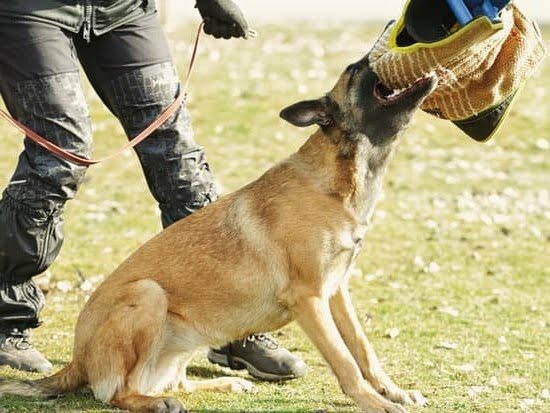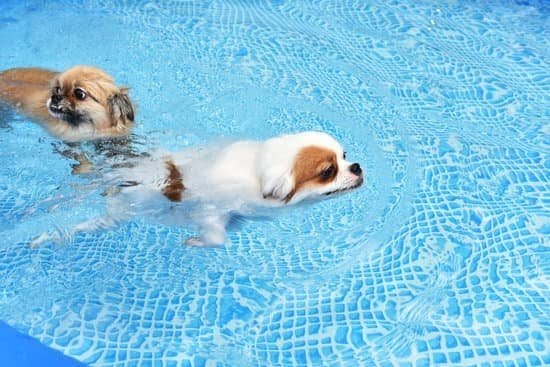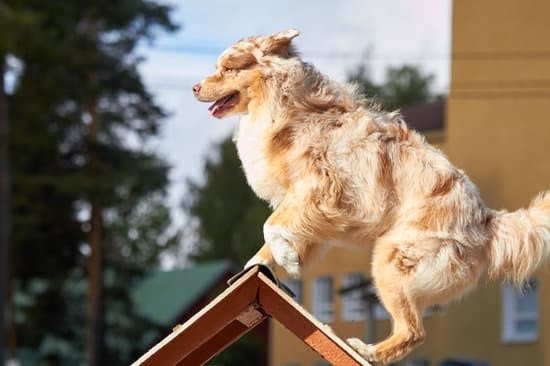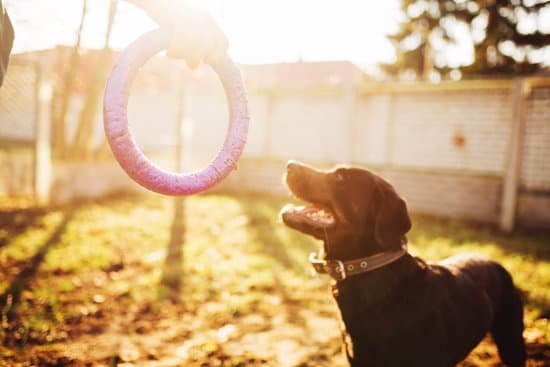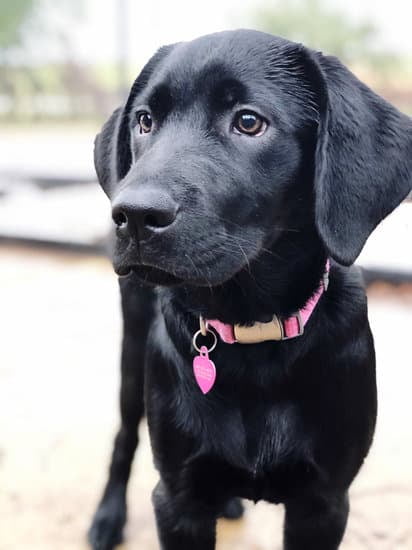Introduction
Dog agility training is a wonderful activity for both you and your beloved dog as it’s a great way to build up a connection between the two of you. It also offers an opportunity for both of you to enjoy physical exercise and experience the thrill of competition like never before. When it comes to teaching your pup the basics of agility training, there are many different components involved but all of them boil down to having a great time with one another while strengthening your bond more than ever.
The first and most important element in agility training is having accurate commands and cues that your dog can recognize and respond quickly. Often starting with basic commands such as ‘walk’, ‘sit’ and ‘come’ will help develop the essential communication and trust between yourself and your pooch. Once this foundation has been established, depending on what level of agility you want to reach, activities such as jumping through hoops or completing an obstacle course can be taught. As with any new skill, introducing small tasks at a time will help increase their understanding of what is required until eventually they are able to complete full courses within reasonable speed limits!
Agility training can also open up socialization opportunities, taking your pup out into different public environments such as parks or sports fields with other owners who have similar interests. Here not only will they practice their commands but picking up on another animal’s individual behaviour too – helping them become better equipped in being around other dogs.
Overall, dog agility training offers a sense of purpose for both parties involved that creates more dynamic relationships between pet owners and their furry friends alike!
Benefits
Dog agility training offers numerous benefits both physically and mentally, not only to dogs, but to humans as well. First of all, agility exercises strengthen the bond between owner and dog by providing an enjoyable activity to do together that requires cooperation from both partners. The physical benefits for dogs are tremendous. Agility courses involve a variety of motions including running, jumping, turning corners and weaving through objects; activities that allow for development of muscle tone and coordination as well as increased cardiovascular effect; which will help maintain their overall physical health. Secondly, dog agility encourages mental stimulation by combining physical exercise with visual stimulation since the goal is for the dog to move around an obstacle course most efficiently while following commands from its handler. Lastly, participating with your pup in agility competitions can give them confidence and increase their obedience skills while having fun. Dog agility also helps eliminate problem behaviors such as chewing or barking since they require full attention and dedication throughout the course or routine being performed. Participating in this sport shows how rewarding positive reinforcement is when it comes to training your pooch!
The Basics
Dog agility training is a fun way to challenge both you and your dog. The goal of this type of training is to teach your pup how to maneuver around obstacles while under the control of their handler. This activity relies on clear communication between the handler and the pup through a variety of commands.
An important first step in dog agility training is for the handler to become familiar with all the types of structures that are part of an agility course. This includes jumps, tunnels, A-frames and weave poles. Mastering each individual obstacle helps build up strategic play as well as increase speed as the pup becomes methodical in completing an entire course.
Once familiar with individual elements, it is essential for handlers to become fluent in basic obedience commands such as sit, stay and come. From there, handlers can progress onto more specialized commands for working an agility course such as ‘over’ for encouraging their pup to jump over structures or ‘through’ when running a tunnel. Continuous vocal encouragement throughout the course shapes great results without having to consistently check your pooch’s location thanks to improved communication between you two!
In addition to obedience commands, body language also plays an important role in appropriate guidance throughout each obstacle found on an agility course. Commands like ‘left’ and ‘right’ are commonly paired with right or left pointing arms correspondingly positioned toward intended direction giving the pup better indication toward which route should be taken while remaining focused on running their best time ever!
Necessary Gear
Dog agility training is becoming increasingly popular among pet owners as it is an invigorating and stimulating activity that allows owners to bond with their canine companion while developing trust, understanding, and communication between the two. Whether your dog is in it just for fun or you are looking to compete at a higher level, we have provided a comprehensive guide on the necessary gear for agility training.
1. Collar & Harness: In order for your pup to participate in agility courses, they must be properly attired. A collar and well-fitting harness are essential so you can easily direct your pup through the course without tugging more than is necessary. The collar also provides an easy tether point when needed during obstacles. Some “no-pull” harnesses allow greater control over your pup with less effort from you.
2. Leash: The leash is used to help give you control when moving around the course with your pup and helps direct their attention to different obstacles along the way. Choose a leash made of durable material that will withstand rough play, dragging on the ground, and any dirt or water involved on each obstacle.
3. Treat Pouch: Having a treat pouch on hand while training provides positive reinforcement along the course. Not only may treats reward positive behavior (like successfully navigating an obstacle), but they also serve as distractions and rewards when needed such as encouraging focus away from barking dogs or inviting them to tackle new obstacles – always followed by plenty of praise of course!
4. Toys: Dogs are naturally curious creatures which makes training them interactive fun – adding toys can help pique interest even further! Toys like kongs, rope pullers, balls, and frisbees provide a distraction from more pressing matters- like finishing an obstacle before their tail wags clear off – upping the fun factor during each practice session!
5 . Obstacles Course Kit : For those looking for competition grade courses at home purchasing an agility kit complete with regulation jumps, tunneling poles, D Wraps corners turns , cones, weave bars etc., is optimal . This set up can be tailored easily according to needs , dimensions adjustments , varied terrain sets , indoor and outdoor considerations etc . Helpful tip? Take note of regulations set forth by your local regulating body including regards size specifications of obstaclesf furnishing , construction materials used etc providing a safe environment not only for both handler but pet too !
Getting Started
Start by training your dog basic obedience commands such as sit, stay, come and heel. This will help to build the foundation for successful agility training; it also helps with communication between you and your dog.
Once your dog is comfortable following basic commands, start teaching them the names of each obstacle course element- such as jump, tunnel, teeter etc. The next step is to focus on desensitizing them to various things on the course like loud noises, slippery textures and high jumps. When starting the actual agility course make sure to break down each task into smaller parts so that it does not become too overwhelming for either of you. Rewards can be given after each successful obstacle in order to keep up motivation. Always work step by step until the entire course has been mastered. Do not push your dog too hard and make sure they understand what they are expected to do before progressing further. Lastly create distractions while working on the agility course; this will ensure that your dog is completely focused on the task at hand even if there are other things going on around them.
Etiquette and Tips
One of the most important parts of dog agility training is following proper etiquette when participating in a session. As a handler, you will be in control of your dog’s movements and direction, so it is important to remain focused and remain professional at all times. Keeping your composure even during challenging times is essential.
Additionally, keeping safety in mind for both yourself and your pup is key. This means paying extra careful attention to the type of equipment being used and its set up. Also, ensure that there are no sharp edges or items protruding from any part of the course – these can easily terrorize or injure a pup mid-session.
Furthermore, make sure you have effectively communicated with the other handlers present before starting each session. Clear communication allows everyone involved to anticipate potential issues while they are happening – making them easier to solve or circumvent without having to stop the flow of the session entirely. You may also want to consider whether various tasks cause anxiety or stress for your puppy before approaching particular activities with them – if so, developing strategies to manage this stress should be done prior to attempting any exercises with them on an agility course. Lastly, don’t forget that providing lots of verbal praise or treats as rewards when they complete an activity successfully can help reinforce positive behaviors during each agility training session!
Troubleshooting
Troubleshooting during dog agility training can be essential to ensure that dogs and their handlers are on the same page. When a dog, handler or both make mistakes it is important to take a step back and determine what might have caused the error. Many common mistakes are related to either miscommunication between handler and dog, or lack of focus or distractions.
One common mistake during agility training is when obstacles are taken out of order. This often occurs when handlers guide their dog too quickly through an agility course without considering the full scope of the course first. To avoid this error, handlers should break down the entire course in order before giving their dog commands to complete each obstacle. This can help keep order in the course and help dogs stay focused from one obstacle to another so they complete them correctly in sequence.
Another potential error could occur when dogs mistakenly taking obstacles too quickly, like jumping over a jump before turning around it properly or not moving around a cone before completing another obstacle after it. To help with this problem, handlers may need to reinforce positive behaviors verbally instead of physically guiding the dog through each obstacle, as this can get confusing for dogs and create more opportunities for confusion and mistakes on-course. Additionally, as mentioned earlier, breaking down courses into pieces ahead of time can help dogs understand where they should be going next which can lower their likelihood of going too quickly.
By understanding these common mistakes made during agility training, handler’s have an easier time troubleshooting them and helping dogs build strong foundations with their handling skills so they grow as successful agility competitors together!
Achieving Goals
Achieving goals in dog agility training is a fun and rewarding experience for everyone involved. Dog owners set specific milestones for their pet, and as the pet completes these goals, they get closer to achieving the overall goal of being an agility champion. The goal might be for the dog to master basic weave poles or become an expert at running course sequences. Whichever level you’re aiming for, understanding and following some important basics is essential to success in learning dog agility training.
The first step is teaching obedience. Before any physical activity begins, your pup needs to understand basic commands such as sitting when told, coming when called and staying in one spot if required. Quality reinforcement will help keep the pup focused during training sessions. As progress is made during the process of agility training, positive rewards go a long way towards making sure your pup feels good about its accomplishments and continues on its path of achieving bigger milestones moving forward.
In addition to obedience, bonding with your pup is also an important step before beginning agility training. This bond between owner and pup helps create trust which can be a vital factor in how successful this type of training can be. Even seemingly small things like going out for walks together or playing tug-of-war are incredibly beneficial activities that contribute to the bonding experience between pet and owner; this will help create a strong relationship which will allow you to communicate better with your pet when it’s time for agility practice.
Finally, practicing regularly will ensure success with agility training. Incorporating plenty of repetition into each session helps form habits that lead up to mastering difficult courses as you work towards achieving bigger milestones together with your pup. Patience also plays a key role in this process: it’ll take time and dedication from both owner and pup but having clear goals which are achievable over a gradual period can make all the difference. With consistent practice periods combined with trust, enjoyment of activities together, obedience lessons always rewarded positively; pups can achieve big milestones during their dog agility journey!
Conclusion
Now that you have a basic understanding of dog agility training, it’s time to jump in with both feet and get started. Although it may be tempting to start out fast and hard, it is recommended to take things slowly in the beginning. Familiarize yourself with the commands and equipment you will use before working with your pup. Dogs are incredibly intelligent, but they can also get overwhelmed quickly. Be sure to provide plenty of treats and praise throughout your training sessions as it will help keep your pup motivated. Establishing a relaxed atmosphere during the sessions can go along way towards helping your pup shine through the process! With some patience and dedication, you’ll be able to see great progress in no time at all. So what are you waiting for? Let’s go! It’s time to embark on this exciting journey together and create amazing agility feats with your pup!

Welcome to the blog! I am a professional dog trainer and have been working with dogs for many years. In this blog, I will be discussing various topics related to dog training, including tips, tricks, and advice. I hope you find this information helpful and informative. Thanks for reading!

